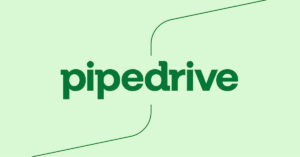Submitted by Guest Writer Rosanne D’Ausilio, PhD
Consultant, Master Trainer, Customer
Service Expert, Coach & Best Selling Author
To Train or Not to Train: Kicking Your Customer Service Up a Notch
According to a recent survey conducted by Tealeaf, a leading customer experience management company, one key element to surviving an economic downturn is excellent customer service. This is a huge opportunity for companies (like yours) willing to significantly improve their customer service, as this enables you to stand out among your competition.
By providing world class customer service, and listening to what the customer needs and wants, you are more able to satisfy your customer’s needs. This allows you to not only retain the loyalty of existing customers, but through positive word-of-mouth, procure new ones without massive spending on marketing and advertising.
This is vital since these same survey results showed that in the online market in particular, 4 out of 10 people stopped doing all business with a company after just one incidence of poor customer service. A favorite expression of mine (I don’t know who said it) is you don’t get a second chance to make a first impression.
Listening is a major component in customer service. I just finished reading A Whole New Mind by Daniel H. Pink. He reports research from twenty years ago when doctor-patient encounters were videotaped. They found that the doctors interrupted their patients after an average of 21 seconds. A more recent study shows that doctors have improved. It’s now 23 seconds before they interrupt.
While we can all probably relate and even chuckle, if we move this to the customer service arena, what happens? Customers don’t get listened to. And what do customers want? What do we all want? To be treated with dignity and respect, and most of all, to be heard.
It isn’t that people don’t want to hear what’s being said. Oftentimes the intentions are good. We want to do our best job in the shortest time possible. What ends up happening is you listen for the pause to jump in and take the person where you think they want to go (which may or may not be accurate). If you’re listening for the pause, you are not listening to the person so you have no idea what they have said and usually they repeat it and actually extend the contact.
In today’s world repetitive, routine, ‘just the facts, ma’am issues can be handled through self service usually efficiently and effectively. Therefore, the more complex, complicated, and accelerated calls are necessitating human contact.
Tools, techniques, common phraseology, and language are just a few requirements for world class customer service.
But are these taught in school? No. These are introduced in customized, live, interactive training sessions delivered in real time. Is this a cost to bear? No. This is about investing in your people. Usually the lowest paid person has the highest responsibility of contact with the current and potential customers. There are KPI (Key Performance Indicators) that can be directly positively impacted by customer service skills training.
What needs to be included? Obviously communication and (pro-active) listening; rapport building, anger diffusion, option offerings, and the like.
After all, we, the people, are who make the difference.
—
For more resources about training, see the Training library.
Rosanne D’Ausilio, PhD
Consultant, Master Trainer, Customer
Service Expert, Coach & Best Selling Author
www.human-technologies.com
www.HumanTechTips.com
www.customer-service-expert.com/report.htm
Subscribe to Rosanne D’Ausilio’s popular tips newsletter at www.HumanTechTips.com
 Sections of this topic
Sections of this topic














